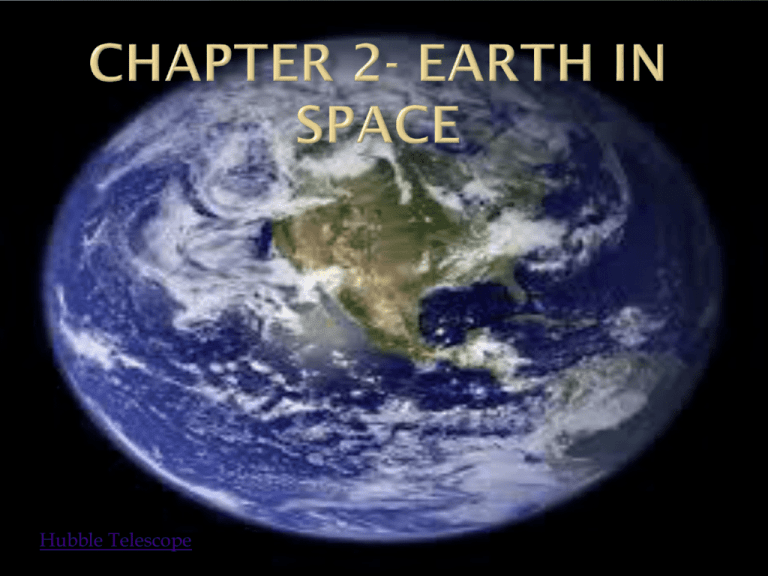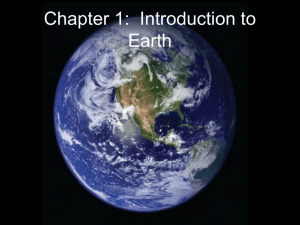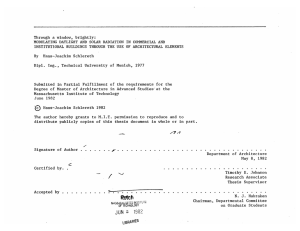Chapter 2- Earth in Space
advertisement

Hubble Telescope Space and Universe Universe is made up of all existing things, including space and earth Space is filled with objects called stars. Most are found in galaxies. Milky Way Milky Way Planets- major bodies that orbit a star Four inner planets: Mercury, Venus, Earth, Mars Terrestrial- which means solid, rocky surfaces Five outer planets: Jupiter, Saturn, Uranus, Neptune, Pluto Mainly gaseous, with the exception of Pluto which has a rocky core Sun, Earth, and Moon Diameter of sun = 865,000 miles, more than 100 times greater than the earth Earth’s diameter=8,000 miles Earth is the third planet from the sun Fifth largest planet Earth’s orbit is elliptical Moon is 240,000 miles away ¼ the size of earth Influences the earth’s ocean tides Solar energy- energy that comes from the sun, which all of the earth’s energy comes from Affects weather, plants, animals, and human Rotation One complete spin of earth on its axis Takes 24 hours Rotates in a west to east direction See the effects as the sun rises in the east and sets in the west Allows the entire planet to receive the warming effect of daylight and the cooling effect of darkness Revolution Earth also revolves around the sun Elliptical orbit every 365 ¼ days, 1 year Every 4th year, have an extra day in February Tilt Tilted 23 ½ degrees from perpendicular Affects the amount of solar energy that different places receive during the year Solar energy and Latitude Different places on the earth receive different amounts of solar energy Near the equator receives a lot yearly Tropics- warm low latitude areas near the equator Polar regions- areas of high latitude and colder regions near the North and South Poles receive less solar energy The Seasons Times with greater or lesser heat Winter, spring, summer, fall Summer Solar energy is stronger, warmer and longer days Winter Solar energy is weaker, colder and shorter days Spring/Fall Solar energy is more evenly distributed Daylight and darkness are more equal Tilt of the earth causes Northern and Southern Hemispheres to have opposite seasons Solstice The time that the Earth’s poles point at their greatest angle toward or away from the Sun Occur each year around Dec. 21, and June 21 Winter Solstice (Dec 21) Northern Hemisphere- shortest day, first day of winter Sun most direct rays strike the Tropic of Capricorn Antarctic Circle- receives 24 hours of daylight Arctic Circle- recieves 24 hrs of darkness 4 major parts of Earth’s System that are all linked together Atmosphere Lithosphere Hydrosphere biosphere Shell of gases that surround the Earth Extends from the earths surface to space Gravity holds the atmosphere in place 78%nitrogen, 21%oxygen, and rest is made up of CO2, and other gases Protects the Earth from the Sun’s harmful radiation http://www.youtube.com/watch?v=1YA OT92wuD8 Solid Crust of the planet All the land on the earth Forms, continents, islands and ocean floors All the Earth’s water Liquid, solid, and gaseous forms Covers about 70% of the earth’s surface Part of the Earth that includes all life forms Includes plants and animals Extends deep in the ocean to the atmosphere Overlaps the other 3








